Lost Records: Bloom & Rage review
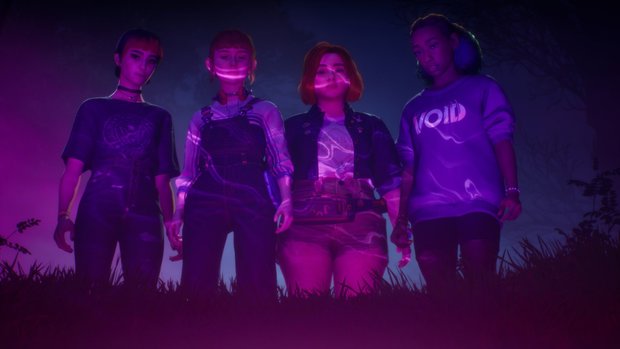
- 1 Comment
Don’t Nod’s thoughtful character study has trouble making its way through inharmonious story elements
Lost Records: Bloom & Rage may be the most narratively imbalanced game I’ve ever played. Not a bad one, just so backloaded that it almost feels like two different games – one far too long, the other far too short and obviously unfinished. And it's not just because it was ill-advisedly split into two parts, released two months apart. What I mean is that is that in both parts, the game’s central hook – a mysterious and mystical anomaly that forever impacted the lives of four teenaged girls, so much so that they never spoke about it or to each other for decades – is all but forgotten for huge chunks of time in favour of a more intimate, grounded tale of friendship and self-discovery.
To be clear, it’s generally well written, if overly slow and based on some iffy player choice options, and will surely appeal to its primary demographic on that basis alone. But for those who come for the hook, it feels like a bait-and-switch. The strange, life-altering anomaly results in some exciting, dramatic moments when it finally factors in, but they take way too long to happen, then feel rushed and almost anticlimactic after so much stringing players along. In keeping with the angler analogy, it’s like if 90% of Moby Dick turned out to be a quiet exploration of the challenges of trout fishing, boat barnacles and scurvy. No matter how good it might be, it just wouldn’t be what you thought you’d signed up for. Then suddenly, not only is there a white whale dead ahead, but a whirlpool, cyclone and jagged rocks as well, appearing out of nowhere for a frenzied finale. And then, just when the seas settle and you think you’ve conquered your obsessions at last, up pops the same hook again, taunting you once again. Argh!
Okay, something this wildly uneven needs some context to explain, so let’s back up a bit. Don’t Nod Entertainment has made a variety of games over the years, but its biggest success by far continues to be Life Is Strange, a narrative-driven thriller that delved the inner lives of teen girls and their relationships amidst an ominous larger story arc with otherworldly overtones. So it should come as no surprise that the French developer’s studio in Montreal has drawn from a similar well for Lost Records.
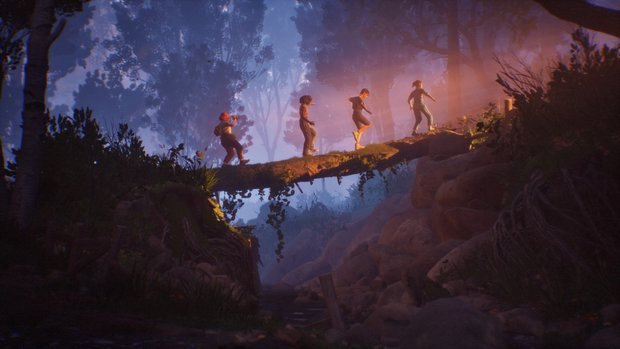
The longer of the two parts, aka “Bloom,” focuses most of its five or so hours predominantly on character building – successfully, and yet paradoxically to its detriment. It ends, however, with a highly compelling last act that finally begins to pay off some of the agonizingly slow-burn development to that point, raising anticipation for the three-plus-hour “Rage” installment to follow. Disappointingly, the second part (or “Tape” as they’re referred to here) manages to start slowly too, but thankfully picks up far sooner and the last couple hours almost make you forget how long the meandering route was to get there. At least you don’t have to wait two months in between now that the full game is complete.
Lost Records centers around the story of four sixteen-year-old girls spending the summer of 1995 together in the small town of Velvet Cove, Michigan, as recalled by their adult counterparts reuniting back in their old stomping grounds for the first time after 27 years of self-imposed separation, for reasons at first unknown to the player. That narrative hook I mentioned – and it’s a good one – is that “something bad” occurred back then that caused the four friends to split up and never speak of it again. Not a falling out, as they continue to have fond feelings for each other even to this day, but an event of some kind that spooked them enough to turn their backs on each other forever (or so they initially vowed).
What event? I certainly won’t spoil it, but you might wish I would because it will be a long, long time before you fully find out for yourself. In large part that’s because the adult characters seem to have inexplicably convenient trouble remembering it themselves, except in the haziest of details. They’d have continued maintaining their silence and distance for good, but after all this time, a mysterious package suddenly arrived out of the blue, addressed to their former grunge rock band, the titular Bloom & Rage, forcing them to confront the secrets they’ve been suppressing for so long. (Or not.)
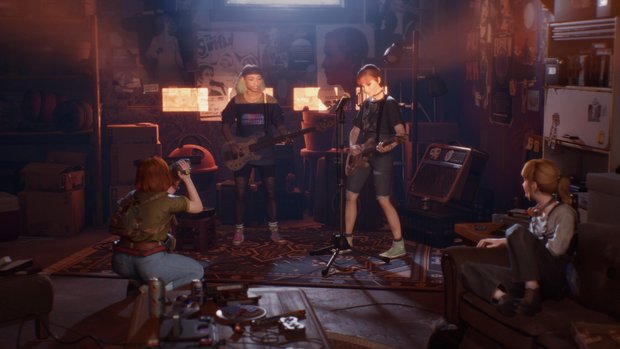
The game continually flips back and forth between present and past, to an unnecessary degree, perhaps to conceal the fact that nothing much actually happens for long stretches in either time period besides talking, especially in the first half. Which is fine – I’m up for a good gabfest if the characters are interesting and it all seems to be building towards something. And indeed the characters here are interesting, but for the longest time the story only seems to be building towards something more. Every time it comes close to revealing something juicy, it teasingly pulls back you from the ledge for another long dialogue grind.
Now, here’s where I must offer a disclaimer: I am... NOT a teenaged girl. Never was, in fact. So perhaps I’m not the core audience for Lost Records. Having said that, it’s clear that the game has more on its mind than being a YA story exclusively for girls, so it’s frustrating that so much of the game does so little to try to bridge that gap. At one point, one of the girls describes their group’s own teenaged summer odyssey as changing from Stand by Me to The Blair Witch Project, but other than a few key segments that start to feel less and less earned as more time goes on, the vibe (if not the premise) otherwise remains far closer to an older-aged Are You There God? It’s Me, Margaret.
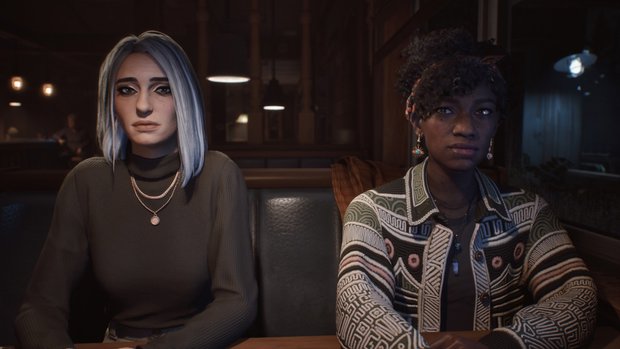
Don’t get me wrong: That would be perfectly okay if it weren’t so evident that the game plans to go somewhere else, but is in no hurry to get there anytime soon. My complaint is solely about the disproportionate emphasis on character building that largely sidelines any sense of plot progression towards the much more intriguing central mystery supposedly behind it all. As a poignant exploration of the ups and downs, the struggles and joys, the passion and angst of teen girls and their relationships, the script is well done. Bolstered by superb voice work and excellent visual design that highlights four women of different shapes, sizes and colours, each one is attentively drawn with their own believable quirks and temperaments and personalities. Their interactions struck me as largely authentic, and I came to care for all of them.
Swann is the playable character, a shy, awkward, plus-sized freckled redhead who’s a bit of nerd, loves her cat and enjoys filming things on her camcorder. In an interesting graphical twist, scenes in the past play out in third person, while those in the present are in first, so for the most part we never see more of the grown Swann than her ringed fingers and arm tattoos poking out of her sleeves. But she sounds very much like a forty-something woman who’s become more comfortable in her skin, and yet still possesses some of the same familiar lingering doubts and insecurities.
An encounter with town bullies puts the teenaged Swann in the orbit of the other three. There’s Autumn, a mature, friendly black girl running the ice cream stand, whose grown-up version is the first (and for a long time only) one to arrive at the bar where they’re meeting. Nora is a lanky, acne-faced punker who smokes and acts tough but secretly harbours some strongly felt fears. And there’s the smaller, ponytailed tomboyish firecracker Kat, whose hard edges are rooted in family strife and make her both fiercely independent and loyal to her newfound friends.
All of their experiences take place over the course of a single abbreviated summer, during which they scour the local playground for lost keys and the occasional other item, practice music in the garage, hike the trails of the regional park, fix up an abandoned old cabin, and plan and perform a public concert – as well as engage in some mischief in the second half when things start to take a much darker turn. For the player, that means very little interaction, other than guiding Swann around slowly (or slightly less slowly if you manually speed her up, when she’s not immovably stationary), clicking the odd highlighted hotspot that automatically pops up – sometimes for non-essential information and other times to “reminiscence” via distant, echoed voice-over – and engaging in chatty conversation.
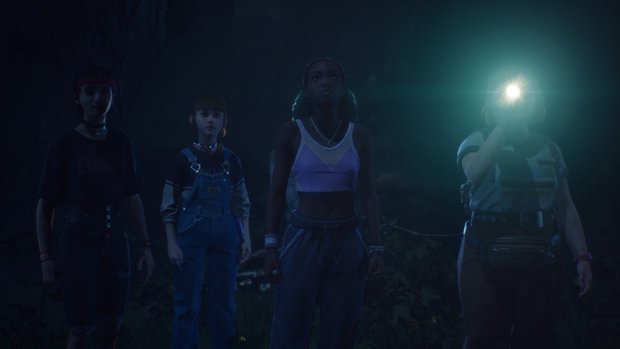
And of course there are decisions to make. As is usual in these sorts of games, your choices have consequences, and a final summary highlights the different decisions you’ve made and how they impacted your relationships. Its implementation, however, leaves much to be desired. As events play out, most of the options are to be flirty, merely friendly, or perhaps to have Swann lean into her loner tendencies. I never had to wrestle much with difficult ethical considerations, and nothing leapt out as particularly significant. I chose not to engage romantically, only because I wanted the story to be a celebration of platonic friendship, but otherwise I was always highly caring and supportive and felt comfortable with my choices – except when the game sneakily introduced NEW dialogue choices later than the initial ones, sometimes a split-second too late for me to stop and reconsider.
Occasionally my selections would result in a little broken heart icon instead of a growing one, but that seemed inevitable in a game that ends up going to some heart-wrenching places. Imagine my disappointment, then, when adult Swann ended up alone at the end of the game, having been abandoned at one point or another for some unknown failing on my part. It felt entirely plausible under such emotionally distressing conditions, but the potential outcomes in the summary screens suggest that much different results are possible. So on one hand I commend the writers for including significant branching repercussions, even if the story is destined to end up in the same place. But without any real sense of what I did “wrong,” I wound up feeling punished by a needlessly unintuitive system I couldn’t easily reverse even if I felt compelled to go back and try again. (Which I don’t. The alternate endings will turn up on YouTube soon enough.)
There are a couple of lock combination puzzles, a single brainteaser and one interminably clunky packing puzzle to make things feel a bit more adventurey, and a short second-half stealth sequence provides a nice change of pace, but for the most part this is a highly linear, streamlined experience. The one exception is Swann’s camcorder, which you can use to record all manner of predetermined elements, from birds to graffiti to entire scenic landscapes, and of course your three compatriots. Even that begins to feel samey after a while, though, and slows down the pace even more as you pull up the camera to scour for more framing outlines indicating something you can film. You can rewatch and even edit any of your recordings in your “memoir,” but the editing functions are rudimentary and entirely optional. I fiddled around for a few minutes before losing interest.
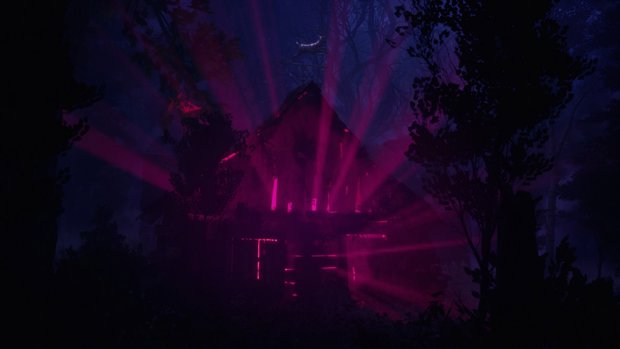
Perhaps the best part of Lost Records, in keeping with its name, is the music. I didn’t recognize any of the artists, such as Milk & Bone and Ruth Radelet, but the licensed tracks are excellent and comprise a variety of different styles. The only exception is the girls’ band itself – its vocals and songwriting in particular. This was probably intentional (they are supposed to be a group of thrust-together 16-year-olds, after all) or it may just be my aversion to songs that veer too far into punk and away from anything resembling actual music. (Just kidding, punk fans. Sort of.)
The visual presentation is no slouch either, excluding a few glitchy blemishes and a certain cuddly but less-than-convincing-looking feline. Faces are wonderfully expressive and the action is beautifully animated. You’ll spend far too long confined in either teenaged Swann’s room (four times all told, each progressively tedious, though you can change clothes to a different outfit you prefer there) or the Blue Spruce bar where the adult friends meet up again, but the scenery is drop-dead gorgeous when you get to roam the woods outside of town. Everything looks suitably grainy through the lens of Swann’s period-appropriate camcorder, but the landscapes themselves are stunning, even as day eventually gives way to dusk and then to night, where the impenetrable darkness is illuminated only by flashlight.
The hour matters, because it’s in the middle of the night when the creepy anomaly behind this whole affair – remember that? – finally comes into focus. Or at least, as much as the game is willing to allow it, because details are still doled out in meagre bits and pieces, and only at the very end do you finally get the full picture. It’s suitably dramatic when it comes, but not at all surprising and I honestly didn’t particularly care much by then, except to finally get closure. And yet even that gets yanked away with a post-credits scene that pretty much undermines the impact of the previous denouement and hints at something more mysterious we’ll surely never get to see.
Ultimately, Lost Records is like two games uncomfortably crammed together in one. There’s a heartfelt, at times touching character study about four girls at an awkward age of growing up and becoming independent, who first form close bonds of friendship before being driven apart by trauma. It feels genuine, and all of us can surely relate to it on some level or another. Then there’s the anomaly, which serves mostly as an intermittently teased-out plot device until finally playing its pivotal role in the larger narrative, too little and too late, then abandoned as an unfulfilled cliffhanger. And here’s the rub: the second story wasn’t needed! The character drama could have easily stood on its own with only minor adjustments and been much stronger for leaving the distracting supernatural angle out entirely. The anomaly isn’t even the emotional core of the tale, which is actually a completely separate, entirely natural development halfway through that packs an even greater punch never previously foreshadowed.
Final Verdict
It’s a shame that Don’t Nod couldn’t find the right balance, because I really liked the protagonist and felt invested in her story, both teenaged and grown-up versions. I liked the others too, each in their own distinctive ways, so I resent all the more that my perfectly reasonable relationship choices led to such unsatisfying results. I would have also preferred more to actually DO as a player, because progress can be a slog without it – a thoughtful, intelligently conceived slog with some bangin’ tunes and lovely graphics, but a slog nonetheless. Still, I remained motivated to uncover the tale of Swann and her newfound friends whenever the unthrilling “thriller” elements got out of the way and let the character drama work its own magic instead. I’d love to play a game that fully embraced the forest anomaly too. It just doesn’t really belong here, shunted to the background like an unwelcome McGuffin until needed to stretch out the mystery a little while longer. So perhaps more than most games, Lost Records needs the right expectations going in. Come for the mystery and you might leave enraged; come for the characters and you might just have a bloomin’ good time.
Hot take
Don’t Nod spins a thoughtful yarn about friendship and trauma, but Lost Records can’t find the right tonal balance to guarantee a hit.
Pros
- Likeable and relatable lead character
- Outdoor environments in particular look stunning
- Superb voice acting for both older and younger character iterations
- Great tunes sprinkled in throughout
Cons
- Key story elements doled out too slowly and sparsely
- Supernatural element is more distraction than benefit
- Unintuitive player choice system can lead to overly punishing consequences
Jack played Lost Records: Bloom & Rage on PC using a review code provided by the game's publisher.


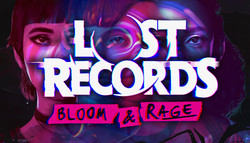

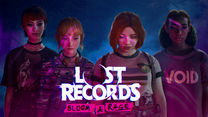



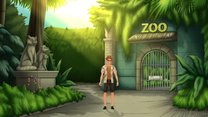


1 Comment
Want to join the discussion? Leave a comment as guest, sign in or register.
Wish there was a better ending.
Reply
Leave a comment